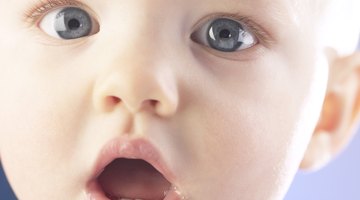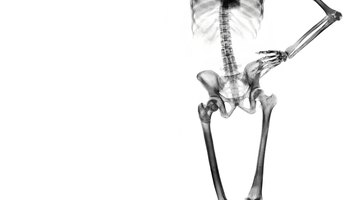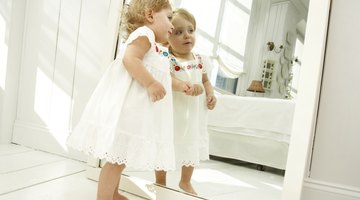Stages of Maturation in Children
Child maturation refers to the genetic, biological and physical development from conception through adolescence. There are several developmental milestones that occur in healthy children. Although there are normal patterns of maturation in child development, individual and environmental factors make it impossible to pinpoint exact time frames, as no two children develop in the same way.
The First Year
The first 12 months of maturation culminate with the child's ability to walk unassisted. By about 12 months, most children have become confident on their feet. Leading up to this major milestone, however, is the ability to roll over (approximately 3 months), grasp a rattle (approximately 3 months), sit without support (approximately 6 months) and stand while holding on (approximately 7 months). According to Robert S. Feldman in "Life Span Development," these hallmarks are typically met by 50 percent of children by the month indicated.
The Second Year

Physical Development in Children Ages 0-3 Years Old
Learn More
When a baby is first born, his head accounts for one-quarter of his body length. By the second year, the body has grown at a faster pace than the head, which now makes up one-fifth of the child's entire body. According to T. Berry Brazelton in "Touch Points: Birth to Three," the "terrible twos" are so known for the child's increased ability to walk and scamper, which results in increased autonomy and exploration. In addition to squatting, balancing on one foot and climbing stairs, the child's baby teeth have now grown in. It is not uncommon for children of this age to climb up onto chairs and stack objects above their own height.
The Third Year
In the third year, legs grow faster than arms. A three-year-old can typically kick a ball, balance on one foot, and show left- or right-hand dominance. It is typical at this time for children to begin grasping a crayon between their first two fingers and thumb.
The Fourth Year

Brain Motor Skills
Learn More
During the fourth year, fine motor skills begin to develop, as demonstrated by the ability to draw lines and shapes, walk in a straight line and run around obstacles with finesse. The child is also beginning to both throw overhand and catch a ball, as well as play on the jungle gym and playground.
Ages 5 and 6
By the sixth year, a child's head makes up one-sixth of her entire body. Gross motor skills are now well-established, and fine motor skills are becoming refined.
Ages 7 to 11
By the 12th year, the head is one-seventh of the entire size of the body, and primary and secondary sex characteristics are becoming more distinguishable.
Adolescence
Puberty marks the end of childhood and the beginning of adulthood. Primary sex characteristics, including reproductive ability, as well as secondary sex characteristics, such as:
- pubic
- facial hair
- become fully expressed in each sex
The conclusion of childhood and beginning of adulthood is marked by "semenarche" in males, which is the first ejaculation, and the first menstruation in females referred to as "menarche."
Related Articles
- "Life Span Development: A Topical Approach"; Robert S. Feldman; 2010
- "Child Development: Fifth Edition"; Robert S. Feldman; 2009
- "Touchpoints: Birth to Three"; T. Berry Brazelton, et al.; 2006
- "Touchpoints: 3 to 6"; T. Berry Brazelton, et al.; 2002











